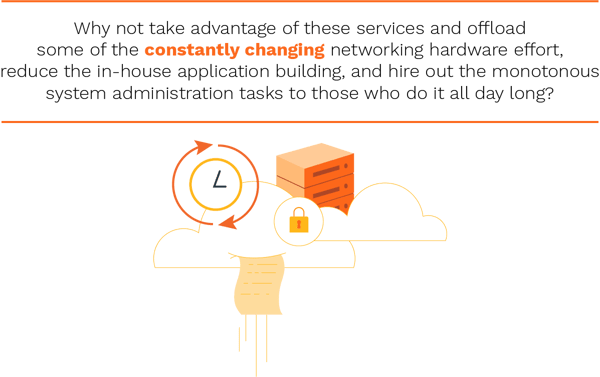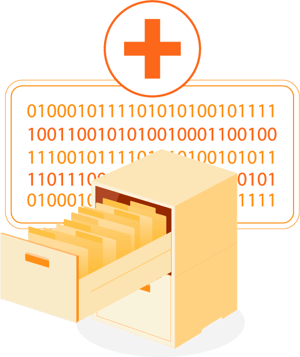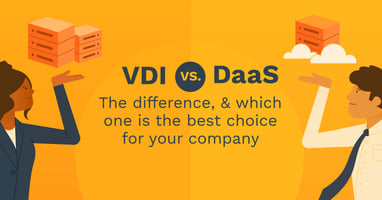In order to answer this question, we need to first examine the role and responsibilities of the traditional system administrator. System administrators in the traditional sense, have been considered the bedrock of corporate Information Technology (IT). They design, install and maintain an organization’s network of computer systems. They work behind the scenes to keep their organization’s IT systems running around the clock. From servers, network hardware, operating systems, and desktop software, system administrators are the go-to people.

Even when things are running smoothly, system administrators are tracking the current status of the system. And most importantly, ensuring that the systems are secure. More than any other link in an organization’s IT chain, the system administrator carries the heaviest load. They must stay ahead of the curve. While the typical user interfaces with a few applications for most of their daily tasking, the system administrator comes into contact with more hardware and software components than anyone in the enterprise. In addition, system administrators get stuck with the job of troubleshooting ill-timed user problems. These calls don’t come on a schedule, and the system administrator doesn’t get to go home at 5:00 PM when half the company can’t access their email, or when database servers are down. As you can imagine, the responsibilities of the system administrator are far-reaching and demanding.
Transitioning to the Cloud
Ask five different tech professionals what “the cloud” is, and you're likely to get five different, overly complicated answers. Cloud computing simply means accessing your applications and data on the internet. Cloud computing is here and the services available on the cloud are growing each day. New applications, databases, and networking solutions become available, from an ever-growing number of vendors and consulting firms who work hand-in-hand with cloud service vendors.
The cloud service provider is the one who needs to know all the finite technical details. The tasks of keeping servers running, networks connected and databases from failing; all occur on the other side of the internet connection.

It’s not a matter of “if” an organization will utilize cloud computing, it’s a matter of “when”. In fact, there are very few organizations who aren’t already use cloud computing. It might be somewhat invisible to the end user, but the system administrator knows it.
There are many benefits of crossing over from the traditional way of doing business to cloud computing. Of course you’re already aware of some of these benefits such as reduction of in-house hardware maintenance, no more planning for power outages and data backups, the ability to work remotely, upfront hardware and software savings, regulatory compliance, and above all, scalability.
But let’s just look at one example of the scalability that cloud computing has provided us most recently.
Electronic Health Records - These days, it’s not good enough for a specialist to wait for your primary physician to fax paper copies of your records for review. Today, your orthopedic surgeon can see, not only the results, but the images of your medical imaging; usually while you wait in the office. Not that long ago, you went for an Xray, waited for it to be read, then went to your specialist for a consultation 3 weeks later. Only to be told you need surgery. Today, that surgery is probably done within those 3 weeks. Not only is speed a factor, but in the medical arena, there are regulations to abide by. There are privacy concerns regarding a patient’s medical records, and they are regulated by the federal government. Any medical system designed by a cloud provider will already have those security measures in place.
The best part of this example is the portability of the records. There are a variety of medical record services available to healthcare providers. Many use the same system, giving providers the ability to share records directly. Providers who use other systems are able to upload electronic medical records to other systems using similar languages, such as XML.

Furthermore, you own all those records, and you now have instant access to them from your desktop and probably from a mobile app as well. You’d be surprised how much detail your doctor recorded from your discussion. That assistant in the room wasn’t typing an email, they were writing down your entire conversation with the doctor. Also, forget that little appointment card your doctor’s assistant just gave you, look at the app and you now have all your appointments at your fingertips.
Talk about scalability! An entire hospital or medical system comes online and doesn’t want to build their own system, this is a piece of cake. The records can be connected almost seamlessly in rapid fashion. Cloud computing makes all this type of execution a reality.
The New System Administrator
There are arguments to be made on both sides of the “cloud vs. non-cloud” way of doing things. Regardless of which way a business elects to go, there are certain facts to face. Most of the tasks the traditional system administrator used to do, still need to be performed by someone. Hardware still needs to be purchased, networks still need to be built, software still needs to be written, data still needs to be stored and security policies still need to be put into place. Many of these tasks are the tasks that will be handed over to a cloud service. But the system administrator’s job is not finished just because someone decided to move some critical tasks to the cloud. In fact, that could be when a system administrator becomes most important.
The decision of which operations of the system to move to the cloud will determine what the system administrator’s new responsibilities are. It’s not likely an existing large corporation will toss their entire operation over the wall to a cloud host all at once. More likely, they will walk into the cloud slowly until they trust their operation can be adequately handled by a cloud service. In fact, whoever is in place as the current system administrator will play a vital role in evaluating and selecting the vendor that takes over responsibility for the work the company chooses to offload; however, the system administrator may need to learn some new skills in order to remain suited for their role once the transition occurs.

Answering the Question
Back to our original question. Do we still need system administrators in the Cloud? The answer depends on how discriminating one chooses to be about job titles and responsibilities. It boils down to this; someone with a certain set of IT skills needs to do, or at least interface with, a cloud vendor who provides a service. If an organization fully relies on the cloud for all its business, its current system administrator will need to have, or at least be willing to attain some additional skills. If an organization chooses to offload only a portion of their systems to the cloud, the existing IT staff will probably remain intact, although at some point, fewer of them might be needed.
The people we call, or used to call, system administrators have a certain job description. That job description required a particular base of knowledge. Moving to the cloud doesn’t erase the need for that knowledge, it just moves the goal post a little bit. Moving to the cloud relieves the system administrator of some of their old duties; but, some new ones will be added. If you don’t want to call these people system administrators, that’s OK. They still have a role to play.
We used to have “retail sales people”; we now have “sales associates”. We used to have “employees”; we now have “team members”. In the end, there will be someone between the back end and the display on the screen. They are what we currently call system administrators. Will that be their title in 5 or 10 years? Perhaps a “team member” will let us know.
Categories: Cloud, Cloud-based











